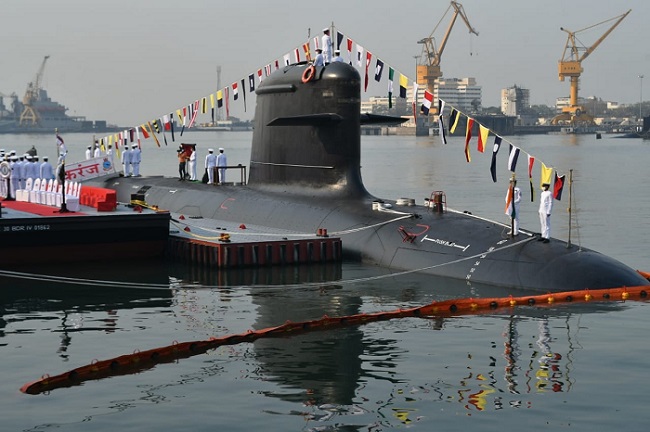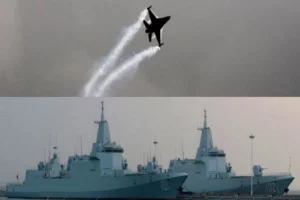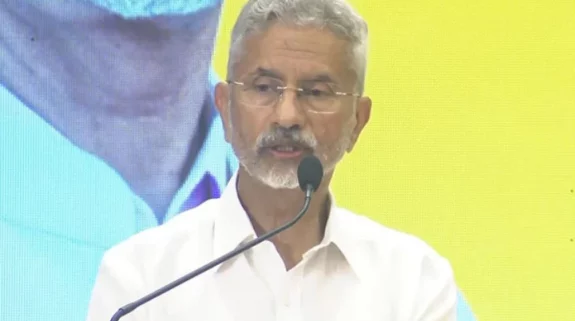In tune with the growing collaboration within the Quad to expand a regional footprint, India is set to commission INS Dhruv–its first missile tracking ship- later this year.
This will also be the first dedicated resource of India’s ballistic missile defence. Putting India in the elite club of countries that are equipped with sophisticated ocean surveillance ships. INS Dhruv will be an asset for the Indian Navy to track satellites, strategic missiles and map the Indian Ocean bed.
The move comes amid rising maritime threats from an expansionist China, which are being effectively countered by the Indo-Pacific Quad, comprising India, Japan, Australia and the United States. Last week, the first meeting of the Quad at the summit level was held, paving the way from a plethora of initiatives ranging from security to new supply chains that exclude China.
It will be able to provide the Indian Navy with an “ECG of the Indian Ocean”, a defence ministry official said, a reference to the electrocardiogram that is used to diagnose problems in the heart. INS Dhruv will help Indian Navy plan better offensive operations in all three dimensions — sub-surface, surface and aerial,” sources told the Hindustan Times.
There are only four other countries, the US, Russia, China, and France that have similar vessels in their arsenal.

The 15,000-tonne ship, part of a classified project, will not only create maritime domain awareness for India in the Indian Ocean but also act as an early warning system for adversary missiles headed towards Indian cities and military establishments. “Final checks are going on the vessel at Vizag before the commissioning, which is expected in the first half of 2021 but neither the date nor the month is decided,” said a senior official familiar with the strategic project reports the daily.
The objectives of the INS Dhruv are two -fold. One, track missiles using the two sensors on-board, the X-Band AESA primary radar and S-Band AESA secondary radar. And, two, gather electronic intelligence. With the active electronically scanned array radars, or AESA, considered a game-changer in radar technology, and can scan various spectrums to monitor satellites of adversaries that are watching over India. Officials said INS Dhruv will act as a major force multiplier to India’s ocean surveillance capabilities. The Indian Navy already monitors the region from the Gulf of Aden to all the ingress routes from the South China Sea with long-range unmanned aerial vehicles, surveillance aircraft and Boeing P8I anti-submarine warfare.
ALSO READ: India, Japan and US devise underwater system to counter Chinese submarine threat
INS Dhruv, the indigenously-developed surveillance ship has been built by Hindustan Shipyard Ltd at its Visakhapatnam facility under the Atma Nirbhar Bharat Abhiyan initiative, has been developed with the help of the Defence Research and Development Organisation (DRDO) and Indian Navy with India’s Strategic Force Command and National Technical Research Organisation (NTRO) as main intelligence consumers.
As India looks to counter growing Chinese influence, it must focus on its naval power. In addition to its cooperation with democratic allies and neighbours in the region, it should increase investment in its navy and strengthening the Indian Navy’s capabilities is key to countering China’s influence in the Indian Ocean given how Beijing’s sea doctrine has taken priority over its land forces.
The Indo-Pacific is increasingly becoming a center for a growing geopolitical contest, with China already making several moves from strategic military bases to predatory economics to advance its own interests in the region. India has begun stepping up and successfully engaging countries in the region to a degree of success. Experts believe the Indo-Pacific will be the front-line of the future as China's nuclear submarines try to avoid detection before crossing the first island chain in the South China Sea.
INS Dhruv can also understand the range and true missile capability of adversary nations that it finds in the Indo-Pacific.




















